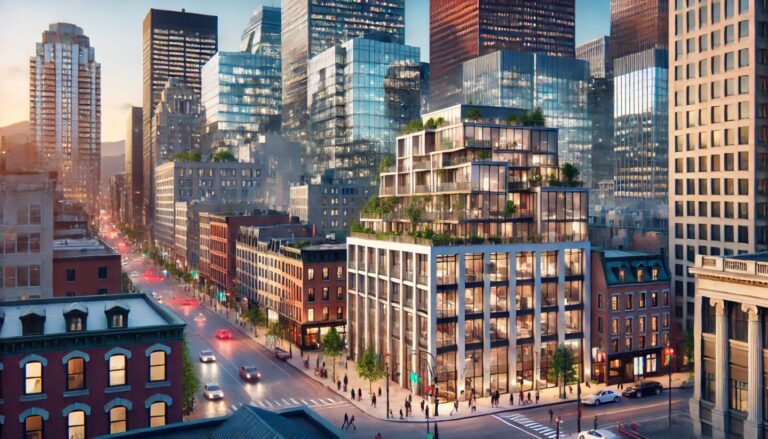The Great Real Estate Cleanup
Less Square Footage, More Strategy
The winds of change are sweeping through commercial real estate. After decades of relentless expansion, companies are taking a hard look at their office footprints, cutting down on wasted space, and embracing a smarter, leaner approach. Too many underused offices, skyrocketing costs, and a new work culture—it’s time for a reset. In 2024, 45% of Montreal-based businesses planned to reduce their leased space within the next 24 months. But how can they downsize strategically without sacrificing productivity or employee well-being?
This shift isn’t just a cost-cutting exercise; it’s a response to a fundamental transformation in how people work. With hybrid models and remote work now the norm, fixed office spaces have lost their relevance. But shrinking office footprints isn’t about slashing square footage—it’s about optimizing space, costs, and efficiency.
The Era of Flexible Offices
Gone are the days of sprawling, half-empty offices. Space optimization is all about flexibility. Companies are embracing shared spaces, internal coworking setups, and modular offices. Montreal-based digital commerce firm Lightspeed reduced its office space by leaning into a hybrid model where employees book workstations as needed (https://www.lightspeedhq.com). The result? Fewer wasted square feet, but a thriving hub for collaboration.
This model also aligns with employee expectations. In 2024, 67% of workers preferred a hybrid work setup combining office and remote work (https://www.gartner.com). Companies that adapt to this trend aren’t just improving efficiency; they’re becoming more attractive employers. Smart workspace reconfiguration is now a key tool for talent retention.
Lease Negotiation: The CFO’s Secret Weapon
The power dynamic has shifted. With a 17.8% office vacancy rate in downtown Montreal, tenants hold the upper hand. Savvy businesses are renegotiating their leases, securing flexible terms, rent-free months, and landlord-funded upgrades. Some are even inserting economic contingency clauses to protect against future downturns. According to our research, companies renegotiating leases in 2025 are expected to save an average of 20% on occupancy costs.
The Next-Gen Coworking Model
Why pay for an office that’s empty 80% of the time? Companies are shifting from static workstations to collaboration hubs. Offices are evolving into multifunctional spaces with breakout zones, private pods for calls, and immersive virtual meeting rooms. These adjustments don’t just cut costs—they create a better employee experience.
Some businesses are taking this further by renting out part of their offices to startups or smaller companies, turning their excess space into a revenue-generating asset. This coworking-inspired model is gaining traction. A recent study found that businesses adopting shared office concepts cut their real estate costs by an average of 30%.
Less Space, More Efficiency
Downsizing office space isn’t just about trimming budgets—it’s a strategic transformation. Fewer square feet mean greater flexibility, better resource allocation, and long-term cost savings. Montreal’s commercial landscape is evolving, and the businesses that adapt will come out ahead. The question is no longer whether to downsize, but how to do it smartly.
Industry experts predict that by 2030, over 60% of office spaces will be redesigned to incorporate hybrid and flexible work environments. For companies, this great real estate reset presents a golden opportunity to streamline costs while delivering workspaces that actually fit modern needs. CFOs and real estate strategists like ourselves now see space optimization as a competitive advantage. Far from just a cost-cutting measure, it’s about creating work environments that align with employee needs and corporate objectives. Those who anticipate these trends and pivot accordingly will stay ahead of the competition.






